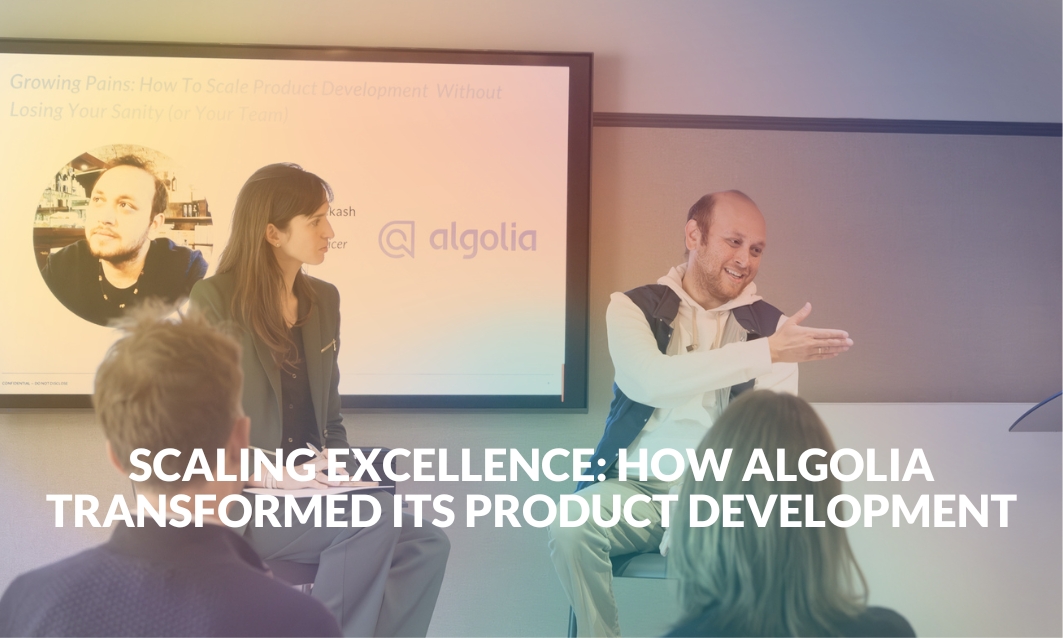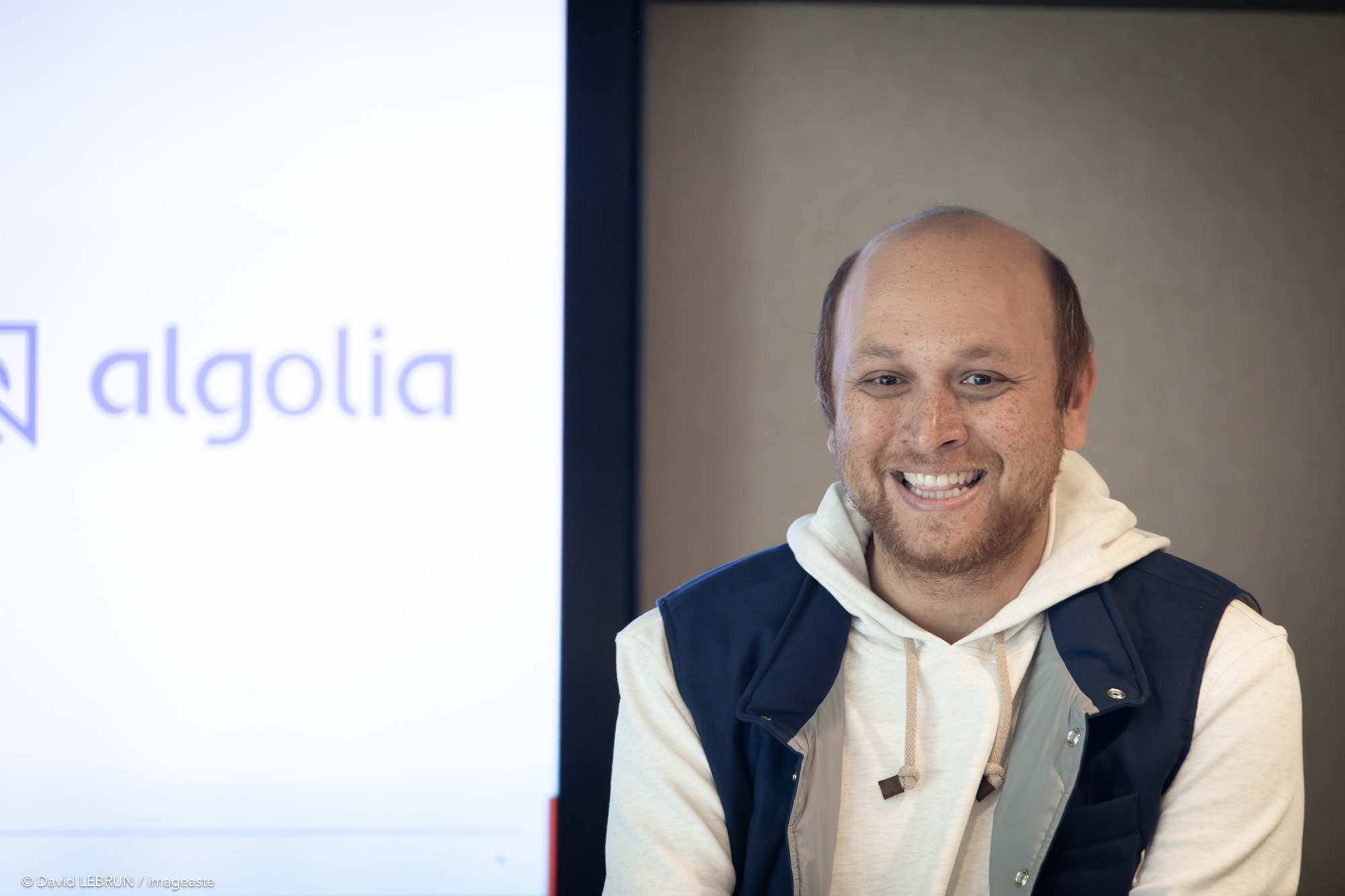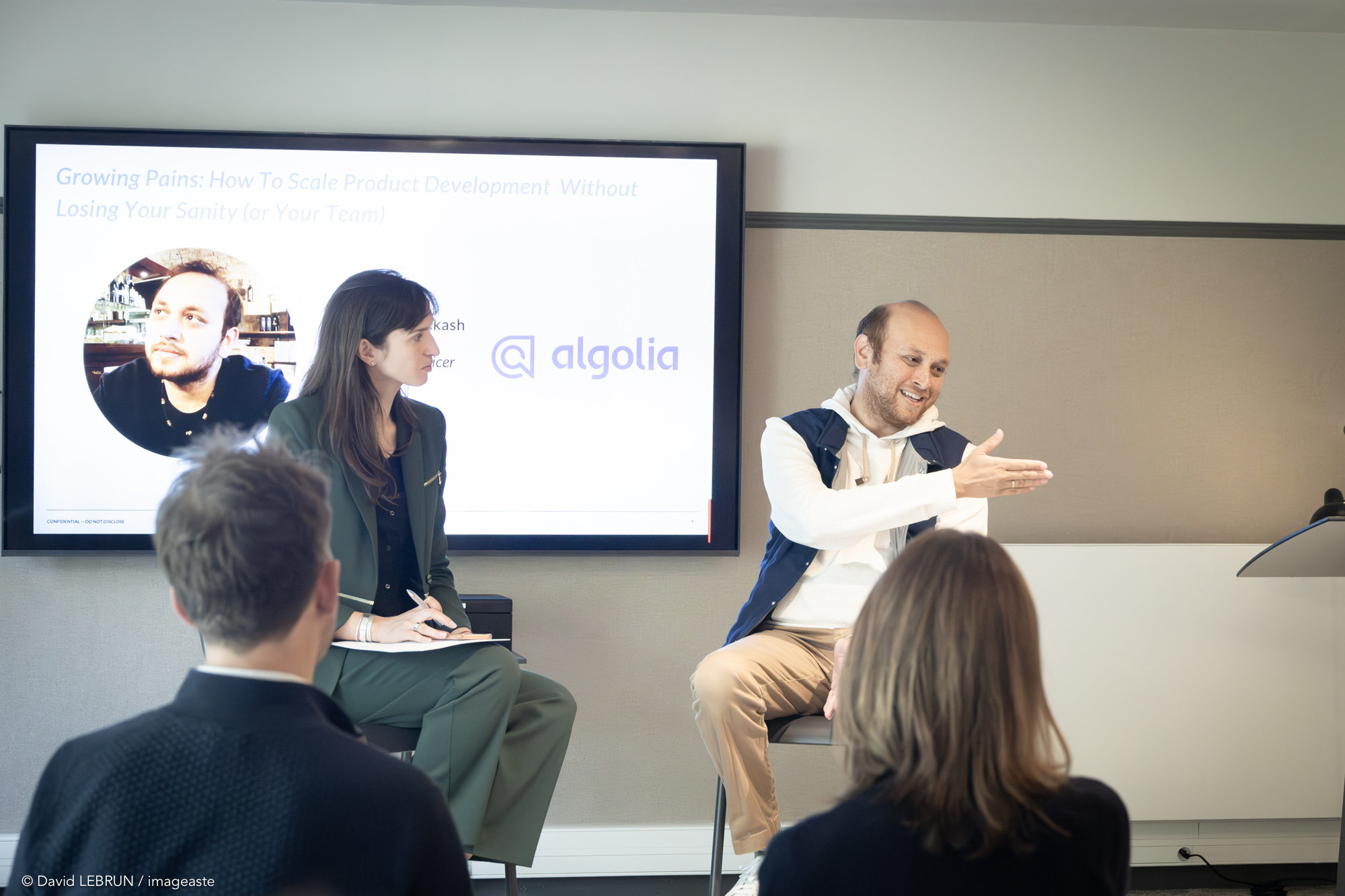
Scaling Excellence: How Algolia Transformed its Product Development
Algolia, a leader in AI-powered search solutions for more than a decade, found itself at a product and growth crossroads more than three years ago.
Its B2B2C and B2B2B search engine has brought steady success and increased revenues. Yet to scale to the next level of growth and respond to the changing demands of customers, Algolia needed to rethink its approach to product development.
So Algolia recruited Bharat Guruprakash to be the Chief Product Officer. Bharat had spent more than 5 years helping to scale cloud communications platform Twilio’s product development after its 2016 IPO. Now his mission was to plot a product strategy that would take Algolia from $70 million in annual revenue to $300 million – and perhaps as high as $1 billion – while also meeting the company’s profitability goals.
In July, Bharat spoke at Revaia’s annual Portfolio Days where he discussed the transformation of Algolia’s product portfolio, including the role of culture, acquisitions, and GenAI. During his tenure, Algolia has evolved from a single-product focus to a multi-product strategy while also changing its go-to-market strategy to win bigger customers.
Product strategy evolution

Algolia's journey began 12 years ago with a single, straightforward API designed to enhance search functionality. As the company grew, it became clear that a broader product offering was necessary to meet the diverse needs of its customer base – and enable the next stage of growth.
When Bharat was hired in 2021 the company had recently transitioned from a founder-led organization to new CEO Bernadette Nixon. The company had built its success on its B2B search engine that powers queries across thousands of websites and applications.
Bharat said the starting point was to redefine Algolia’s core product to something broader than just “search.” At a more fundamental level, the team felt that Algolia was trying to match the user’s intention with the information they needed.
“By changing the breadth of the product, we can identify adjacencies where we could build products,” he said. “More products allow us to bring in more sophisticated selling strategies like cross-selling and upselling.”
From there, the product team began looking for patterns of use cases while asking: What is a customer trying to build with us? And why are they building it?
One of those patterns was recommendations. In 2021, the company announced the beta of Algolia Recommend, an AI-powered API that would automate the creation of product recommendations.
That approach of searching for patterns created a template that has allowed Algolia to expand into new verticals such as e-commerce.
“We realized that in e-commerce, there is a bigger opportunity not just with search, but with merchandising,” he said. “The real problem that we're trying to solve is: How do I merchandise my store so that the right products get featured? So we have to go deeper and deeper into that. That's the master plan. When we see repeated patterns, it's a segment that someone's trying to solve a problem that they're not able to solve. Then we ask: ‘Can we solve it for them?’ ”
To make this new process efficient, Algolia has had to deploy mechanisms so it would be repeatable. Because Algolia’s workforce of 800 is distributed, the product team had to change the way it communicates and launches products, he added.
Rise of GenAI
The expanded product strategy was gathering momentum just as GenAI was about to burst into the public and business consciousness in late 2022. Because Algolia was a veteran of AI, there was some healthy internal skepticism about how radical this new technology would be, Bharat said.
However, the company was very quickly getting questions from its larger customers about what they could do with GenAI. At the same time, end users were changing the way they wrote search queries with longer and more complex requests under the assumption that the underlying search was getting smarter.
The technology had been on the company’s radar before Bharat arrived. In early 2021, the company developed an “answers engine” in partnership with OpenAI to allow for more effective natural language queries. By gradually incorporating GenAI into its products, Algolia was able to understand its strengths and limitations, he said.
The problem at the moment, he said, is that many GenAI companies don’t deliver on their product promises. And customers are not exactly sure what they want to do with the technology. Bharat recommended that companies look at the fundamentals by studying user behavior and trying to identify what information problems a GenAI-powered tool could solve for them.
“A lot of our large customers, especially the enterprise customers, are asking us constantly what we do with GenAI,” he said. “It's in the early innings because customers don't know what to do with it and how to use it.”

Cultural integration and acquisitions
With the market for GenAI accelerating, Algolia began considering acquisitions to strengthen its position.
Bharat’s approach to acquisitions was shaped by his experiences at Twilio when he oversaw the acquisition of SendGrid – a company almost half its size. Twilio hoped SendGrid’s software would enable new revenue opportunities. Bharat said that culture clashes made the integration painfully slow, and it took years for Twilio users to be able to fully access the product through their main dashboard.
“Those bigger acquisitions are very hard to integrate in terms of the culture and the tech stack,” he said. “The acquiring company thinks this acquired company is going to fall into the rituals and the culture of the acquiring company. The reality is that most times the company that has been acquired usually thinks the acquiring company doesn't know what they're doing. I think that cultural intermixing is the biggest challenge and I think most executives ignore that.”
After Bharat joined Algolia, one of his priorities was building up its technology for vector databases – the basic underpinning technology that enables foundational models, semantic search, and chatbots. Algolia was approached by the PE fund that had acquired Yahoo in 2021 because it wanted to sell its vector database unit called Vespa.
“I chose not to move forward with it because it wasn’t the right fit for us,” Bharat said.
Instead, in September 2022, Algolia announced its 3rd acquisition: Search.io of Australia. The early-stage company had less than 50 employees. Just eight months later, Algolia launched NeuralSearch – a GenAI-powered search and discovery tool that leverages the technology developed by Search.io.
NeuralSearch is an advanced, enterprise-grade search technology that combines the precision of traditional keyword search with the deep contextual understanding of AI-driven vector search. By performing a hybrid search on every keystroke, it merges and ranks results based on relevance, ensuring users receive fast and accurate outcomes that align with their intent. This innovative approach enhances both the precision and recall of search queries, delivering a superior user experience.
“We've been quite cautious in how we've approached it,” Bharat said. “We're not going out and making radical claims about it. Because very few people can back it up.”
Bharat said the key to making this integration work was not just the relative size of the two companies, but also the mindsets. To address the cultural issues, he focused on what Algolia and Search.io employees could learn from each other.
“We run at a scale that they've never seen,” he said. “They want to run fast because they've never had to deal with scale. There are lessons about agility to be taken from a smaller company. And for the smaller company, there are lessons of scale to be taken from Algolia.”
Navigating the Shift to Enterprise Sales
As part of Algolia’s product transformation, the company was also moving away from its historic product-led revenue strategy to a sales-led growth model.
Bharat said Twilio had undergone a similar change. At a certain point, the company realized that the incremental gains from product-led sales were too small relative to the size of its revenue to drive sufficient growth. So the sales team was expanded to target larger enterprises.
However, enterprise customers need longer sales cycles and make more complex demands such as robust security and administrative features. This required a significant shift in how Algolia approached product development to make sure those concerns were addressed.
“Their demands are different in that they now want things that are outside the core product,” he explained. “And these large enterprises, for instance, often ask about our 24-month roadmap. 24 month roadmap? It’s nearly impossible to predict that far ahead when the world is changing so rapidly week by week. We have to balance sometimes very custom requests that come from these large enterprises. How do you weigh a $5 million deal tied to a unique requirement that only they will ever use? That's one of the hardest things that we had to figure out.”
Making such tradeoffs is even more complex because the CPO still has a responsibility to goals such as profitability. That requires setting priorities for the product roadmap and allocating scarce resources.
The latter can be a particularly tough message to deliver to a product team that hasn’t been through cycles like the recent downturn in funding and valuations, Bharat said. That has put an even greater premium on margins and difficult choices about short-term and long-term opportunities.
“We focused a lot on getting to profitability,” Bharat said. “How do you balance that with growth? It requires a lot of tradeoffs.”
Bharat said the key to maintaining sanity as a CPO who has to reinvent a company’s product development process while juggling the demands of scaling, profits, disruption, and new customers is surrounding yourself with the right team.
“Hiring a strong set of leaders,” Bharat said. “What I'm looking for is people that I would work for. I've had to build that and rebuild that. It's impossible otherwise.”